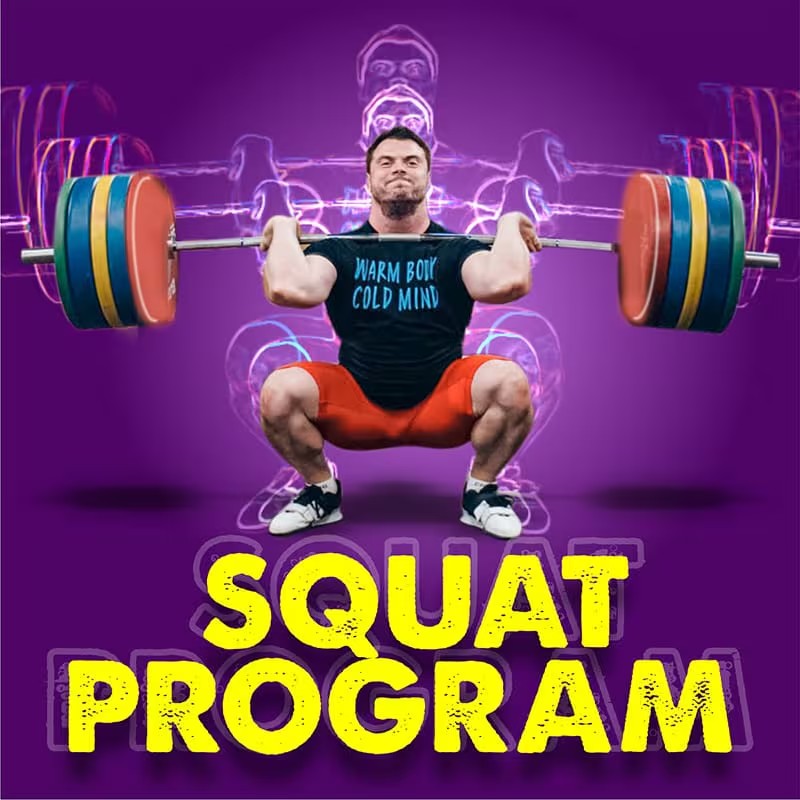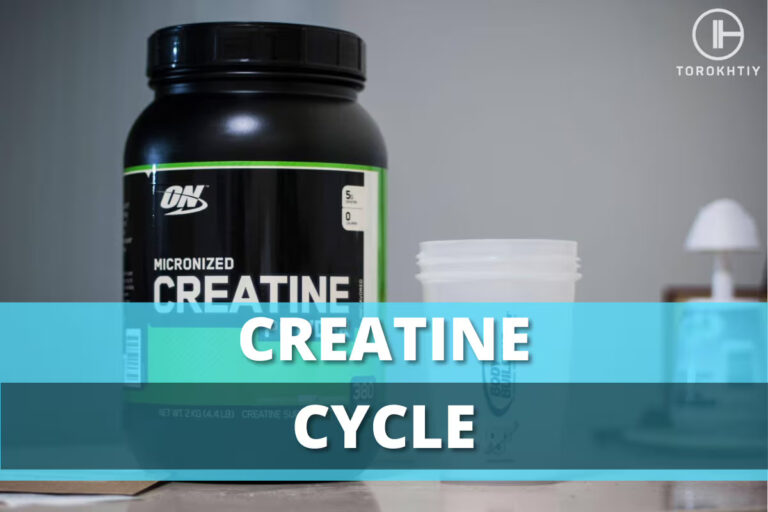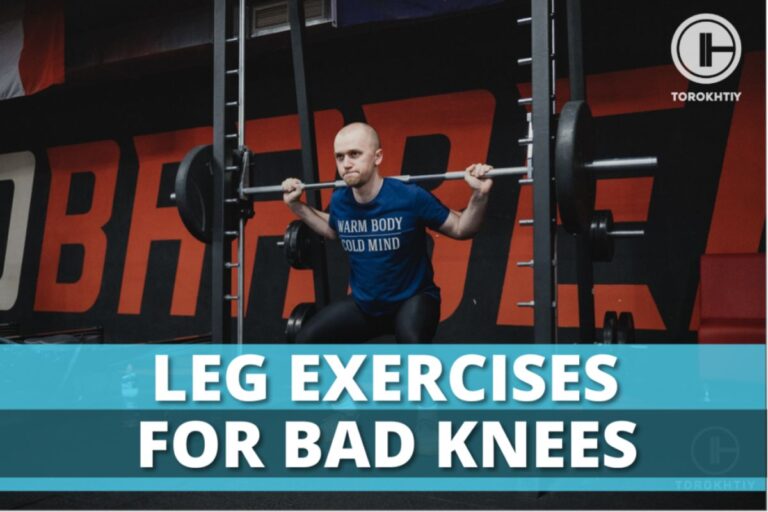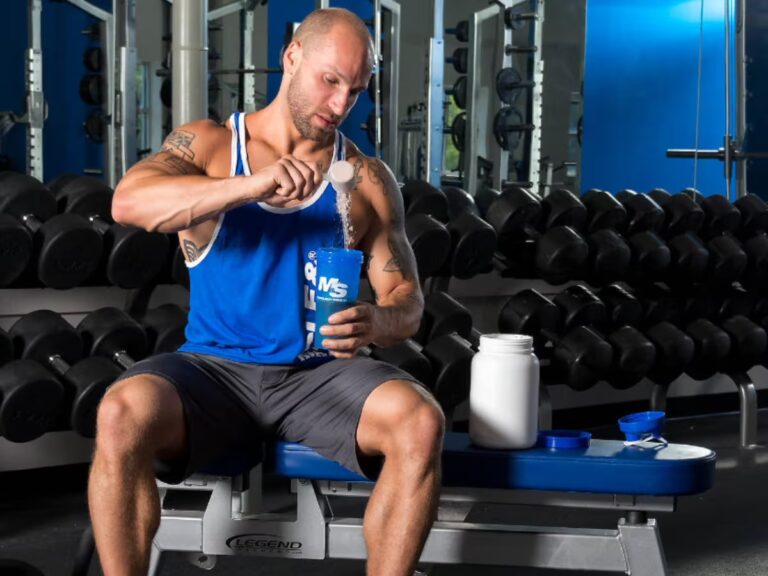Can You Squat Every Day Safely?
Do you want to know the advantages and disadvantages of squatting daily? Plunge into our all-inclusive guide, where the truth about this fitness craze is unveiled. Explore what experts know, the practical ideas that work, and the key points you need to know to choose a workout routine that suits you best. We address the question ‘Can you squat every day’ no matter whether you’re a seasoned lifter or new to the gym scene.
Can You Squat Every Day? Yes, but with caution. Squatting is one of the best activities for strength and muscle growth. You should do squatting regularly to prevent overtraining and injuries, trying not to overdo this exercise at the same time. Find the best way to balance frequency, intensity, and recovery for maximum benefits in your fitness journey.

Can you squat every day?
Squatting every day requires the daily workout systems to be compatible with squat variations. It can be as easy as exercises done with your body weight, doing squats or by squats with barbell or dumbbell weights. As interval training can be a good variation to the continuous load.
1. Variations and progressions
Taking into account the fact that the risk of overtraining is pretty high, you should use multiple squat variations and progressions to reach the great results.
This fires up different muscle groups and since the routine is pretty flexible, it may become multipurposeful and efficient. There are such squat variations as front squats, goblet squats, Bulgarian split squats, and pistol squats.
For instance, the study showed different muscle activation depending on the squat variation in bodybuilders.
Front and back bar positions led to greater activation of the gluteal and lower back muscles compared to all other exercises. Additionally, larger feet position increased the activation of the thigh muscles, particularly rectus femoris, vastus lateralis, and adductor longus.
Also, the squat depth didn’t promote any specific difference in muscle activation, with the exception of the greater rectus femoris activation in front squat and full back squats.
Let’s observe the Bulgarian split squat separately to outline whether it’s a worthy squat variation for everyday workout. It’s a single-leg squat where you elevate your back leg on a bench or a sturdy chair.
This unilateral movement focuses mostly on the quadriceps and requires balance and coordination, involving the core and upper body to maintain proper form.
This compound lower-body exercise is also a great movement to add to a lower-body strength training or total-body workout.
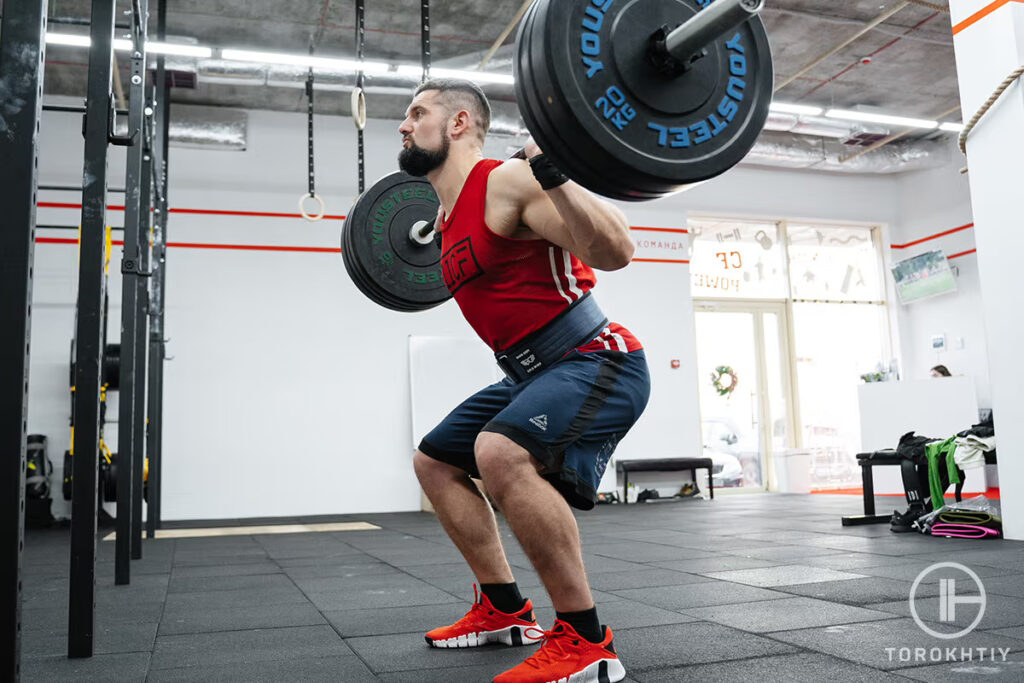
All you need for the Bulgarian split squat is a sturdy bench, additionally you may also add dumbbells or kettlebells to increase resistance.
The key benefit of this movement is involving quads, glutes, hamstrings, calves, abdominals, and spinal erectors. Although a greater focus is placed on the quadriceps and core.
2. Listening to your body
Listening to the body as a main part of squatting every other day is one of the most important things. Being attentive to signs of fatigue, aches, and pain, which could develop into injuries and exhaustion, is a paramount indicator of your condition.
Making the intensity, volume, and rest periods connected with your body’s adjustability to physical exertion enables steady growth and long-term success.
Benefits of everyday squats
What happens if you squat every day? Making your muscles work and engaging core stabilizers while deadlifting or squatting allows you to experience enhanced muscle growth and strength. While the benefits of swinging kettlebells/dumbbells are improved joint mobility and flexibility, which will boost your physical performance.
✅ Enhanced muscle growth and strength
Squats make muscles bulkier and stronger as they focus on the major muscle groups: quadriceps, hamstrings, glutes, and lower back. The continual workload works the muscles, resulting in their adaptation and growth, increasing muscle mass volume and strength, thus, the muscle functionality.
✅ Improved joint mobility and flexibility
Strengthening the muscles and joints, mainly through flexion of the hips, knees, and ankles, is a kind of exercise that facilitates joint health and the ability to move.
Squats work the body across the whole range of motion, which is very important for the lubrication of the joints, losing stiffness in mobility, and improving the movement mechanics. They transform prevention of injuries and maintenance of the joint health into a motor skill.
Drawbacks of everyday squats
Before starting to squat regularly, it is important to understand its risks. You might encounter consequences of overuse injuries, tendon pain, and muscle debility just by sticking to the everyday squat. This scenario may negatively affect your fitness goals. We are going to dive deep into these limitations so that you make the right decision about this type of workout.
❌ Risk of overuse injuries
Daily squatting may become the reason for chronic injuries in the knees, hips, and lower back. The tendons and muscles on the knees and ankles in particular, are permanently exposed to continuous pressure, and lack of rest may result in inflammation and strains, even leading to more serious injuries such as tendonitis and stress fractures.
Over time, these issues may influence your squat performance and, as a consequence, will take you longer to perform another squat exercise.
❌ Muscle fatigue and plateau
People can gain muscle size and strength a daily by performing squat. Still, you won’t have a fresh start without renewed energy the next day. In case you lack recovery time after daily exercises, you’ll feel muscle fatigue as well as hit a plateau.
Overtraining the quads, hamstrings, and glutes which are the major muscles in squatting may cause them to underperform or even fail to grow. As the only reason for your optimal training program is facing new challenges, there won’t be any progress in your performance where every new step will be hard to make.
How to squat every day?
A successful squat program involves careful planning and appropriate selection to make it safe and out of injuries. Overtraining or performing side-squats improperly may lead to injury and burnout. Here are some tips to help you incorporate daily squats into your workout regimen effectively:
1. Training volume
The term “training volume” is frequently used to describe the amount of workload per exercise set/session/time, which are usually estimated by means of the sets, reps, and weights used. However, if you begin doing squats every day, pay attention to your training volume and make sure that you don’t overtrain to get the maximum benefits.
- Moderate volume
Starting with a comforting volume is alright for newbies or people who have never squatted daily before the aim of squatting is to increase muscle strength and endurance. It gives muscles and joints enough time to rest. The idea of practicing 8 to 12 reps for 3 to 4 sessions is quite good. Make sure that you preserve the correct form while squatting.
- High volume
Advanced athletes or sports enthusiasts who are versed to daily squatting may endure more training intensity to generate muscle growth and strength. This could be the squats done in 5 or more reps with different rep ranges; strength work may require 6-8 reps and hypertrophy – 10-12 reps. Do not neglect recovery between the sets.
2. Training intensity
To determine the seriousness of an exercise activity, the level of effort put into that activity which you perform at your maximum capacity, is known as the intensity of training. However, we should also consider the level of workload to avoid overtraining, injuries, and implement some cardio training, e.g., cycling, to avoid overtraining.
- Moderate intensity
Implement daily squats of moderate intensity and choose the weight that allows you to perform the needed reps while perfecting a technique while enabling you to stimulate your muscles.
- Varied intensity
By adjusting the intensity daily, you will avoid overtraining and your muscle s won’t get muscles used to the same exercise. This implies taking a break in between the lighter days to allow for technique sessions and more intensified training for strength and power, compensating for the effort in the following recovery.
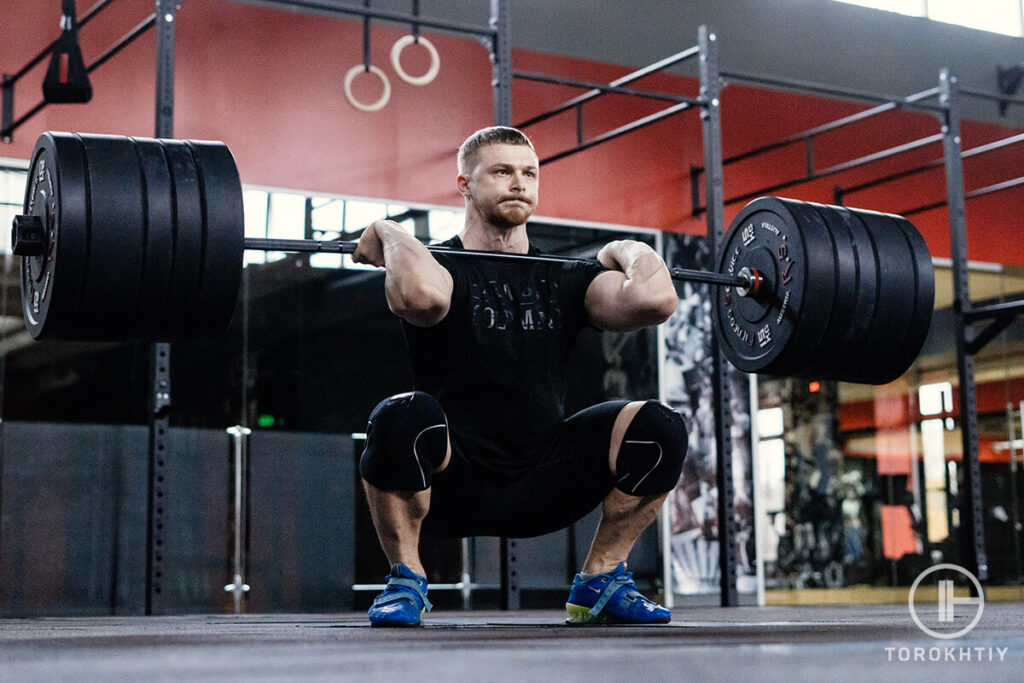
3. Training frequency (Low, Mid, High)
Frequency of training should be adjusted according to the characteristics of a person, their fitness goals, as well as consider the time for recovery or other ways of training.
- Low frequency
For other groups of people the reduction of the frequency of squats will work well. In other words, people who also perform other lower body exercises can do squats 2-3 times a week. This ensures enough time between squatting sessions, thus leading to safe and effective workout as well as cutting down the risk of overuse injuries.
- Mid frequency
It can be appropriate training, especially if you have been squatting moderately 4 to 5 times a week. For those striving to increase muscle mass and strength because this is a process of gradual development that requires recovery and adaptation. This also has the efficiency due to constant workout routine, achieving progressive load, which reduces fatigue.
- High frequency
Advanced athletes who can handle heavy loads and can recover fast, may squat more frequently, about 6 – 7 times per week. Therefore, such an effective training model involves detailed programming, including recovery strategies, which react to your body signals of overtraining to maintain good performance level.
4. A Sample of a Weekly Squat Training Plan
- Monday: back squats – 3 sets of 8 reps
- Tuesday: front squats – 3 sets of 10 reps
- Wednesday: bodyweight squats – 4 sets of 12 reps
- Thursday: pause squats – 3 sets of 6 reps
- Friday: overhead squats – 3 sets of 8 reps
- Saturday: rest or active recovery
- Sunday: Bulgarian split squats – 3 sets of 10 reps per leg
5. Weekly plan for everyday squats
Including squats in your typical weekly program requires finding a proper way to balance your progress and preventing injuries. Here’s an in-depth breakdown of a weekly plan, emphasizing varying intensity, volume, and exercise selection to optimize your daily squatting sessions:
Day 1: Moderate intensity
Kickstart your week by choosing moderate-intensity squat variations to prep your body for the rest of the week. Begin with:
- Back squats
Square out your weight selection at a level that makes you work hard, but don’t compromise on proper form. - Front squats
Now increase to 3 sets of 10 reps, and control your range of motion engaging the quads and core fully. - Bodyweight squats
Finish with two sets of 15 reps enabling you to excel in squatting by applying the full motion during the exercise.
Day 2: High intensity
Elevate the intensity on the second day with a combination of heavy compound lifts and dynamic exercises to stimulate muscle growth and power development:
- Pause squats
Perform five reps with slightly larger weights for each of the five sets. Ground the bottom for better strength and control. - Bulgarian split squats
Switch to 45 seconds with three sets of 8 reps per leg using dumbbells or a barbell if available for added resistance to isolate each leg. - Plyometric squat jumps
Finish with three sets of 8 reps each to develop explosive power and jump height for better athletic impact.
Day 3: Active recovery
Allocate the third day for active recovery to facilitate muscle repair and mobility enhancement:
- Foam rolling
Allocate the 10 minutes to foam rolling the muscles of your lower body to ease the tension and enhance blood circulation. - Mobility drills
You’ll improve flexibility and range of movement through stretching and mobility exercises during 15 minutes. - Light cardio
In the recovery process, you should do a 20-minute low-intensity cardiovascular activity, which can be cycling training or brisk walking that promotes blood flow.
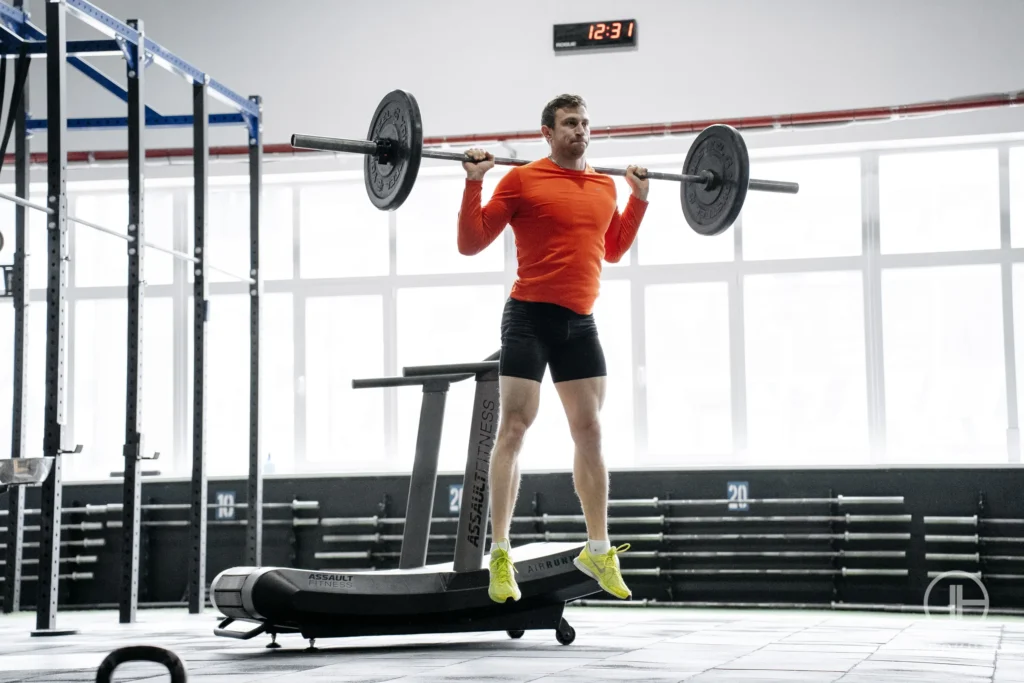
Day 4: Varied intensity
Diversify your training regimen on the fourth day to challenge your muscles with different movement patterns:
- Goblet squats
Complete 12 reps per set with a kettlebell or a dumbbell, hold an upright posture, and activate your core throughout the entire movement. - Overhead squats
Progress to 4 sets of 3 reps using a barbell for overhead stability and mobility enhancement. - Sumo squats
Finish with three sets of 10 reps on each side, adopting a wide stance and ensuring you externally rotate your hips and bend your knees while firing your glutes and emphasizing your inner thighs on top of everything else.
Day 5: Moderate intensity
Maintain a steady intensity level. Dedicate the fifth day for consolidating your progress and promoting muscle hypertrophy:
- Back squats
Decrease the amount of rest from 1:30 to 1:00 as we move into week 5 of the cycle. - Box squats
Change the number of sets and reps to 3 sets of 10 reps to focus on the explosiveness and depth of movement (when squatting with a box or bench). - Tempo squats
Finish with three sets of 8 reps, each utilizing the isometric, eccentric phase followed by an explosive concentric response to create the optimum time under tension and muscle involvement.
Day 6: Low intensity
Dial down the intensity on the sixth day to facilitate recovery while still engaging your muscles:
- Bodyweight squats
Do four sets of 15 reps each, focusing on gradually lowering repetitions to promote muscle endurance by achieving a deeper squat. - Lunges
Move to 3 sets of 12 reps per leg, alternating lunges in front and back, challenging each leg’s different muscle groups, and balancing. - Wall sit hold
End with three sets of 30-second holds to achieve isometric strength. These will help to engage your quadriceps and glutes.
Day 7: Rest and recovery
Allow your body to rest and recover on the seventh day to recharge for the upcoming week:
- Active rest
Ask for soothing yoga or stretching to help stimulate muscle relaxation and mental revitalization. - Hydration and nutrition
Prioritize hydration and nutritious meals with energy-storing substances to replace lost energy stores for developing and repairing muscles. - Mental recovery
Regular mindfulness or relaxation exercises are a way for the person to reduce stress and maintain better health. It is possible to energetically build a daily squat routine following this weekly pattern, which maximizes progress and minimizes the risks of getting injured or burned out.
It is possible to energetically build a daily squat routine following this weekly pattern, which maximizes progress and minimizes the risks of getting injured or burned out.
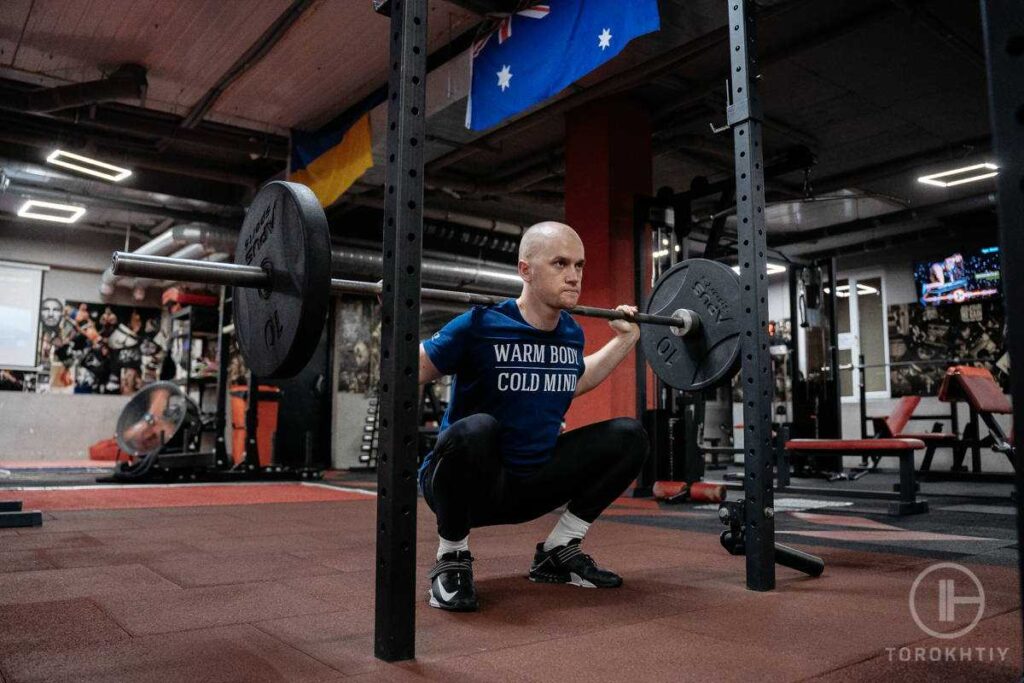
Who Can Benefit from Squatting Every Day?
Let’s explore who can benefit the most from squatting every day:
1. Athletes
Athletes and especially those who take part in disciplines that condemn an instant explosive lower body strength and power e.g. sprinting, jumping, weightlifting, should perform daily squatting.
The repetitive squat action positively affects athletic performance, enhances speed and agility, and reduces incidences of injuries by the development of strong muscles and joints.
2. Strength trainees
People who are on the path to building muscle and strength will definitely prevail others when they do squats in their resistance training. Instead of doing various exercises targeting leg muscles, squats are a one-workout solution for these muscles resulting in hypertrophy and strength gains.
3. Fitness enthusiasts
People who desire to be fitter and develop body composition should also utilize the squats daily. They will realize the benefit of squats as it’s a multi-joint exercise that improve their functional strength.
Squats are compound movements that involve the whole body, while isolating exercises deal with single muscles and thus not involving any cardio tension. Therefore, squats are great for the body and mind for those who want to see distinctive changes in their fitness level and body condition.
4. Rehabilitation
Everyday squatting under the guidance of a licensed physical therapist or rehabilitation professional is useful for athletes who previously had lower body injuries or surgeries. Squats facilitate joint flexibility, stabilizing muscles, joint health, possess preventative and rehabilitative features, and prepare the body for returning to physical activities.
🔻12 Week Squat Program by Oleksiy Torokhtiy
Do you want to double your squat strength? In just 12 weeks, you’ll be able to boost your squat results.
This program transforms any ordinary squat into a powerful athletic movement.
What’s included:
- 12 weeks of squat programming;
- Effective combination of sets, reps, and weights;
- Fully designed and coached by Oleksiy Torokhtiy;
- Over 60+ movements, banded work, and weight training;
- Accessory work for core, joint stability and injury prevention;
- Max out on back squat and front squat at the end.
Start now and boost your squat results!
5. Individuals with sedentary lifestyles
The sitting position all day is also very bad for people who have a sedentary lifestyle as well. They can perform daily squats as a part of their daily routines thereby preventing these negative effects.
Squats as an exercise stimulate the muscles in the lower limbs that are responsible for maintaining your posture and for relieving the stiffness and discomfort in the hips, knees, and lower back that are usually caused by prolonged sitting.
6. Older adults
Squats will take care of your mobility and balancing ability as well as preventing a loss of muscle mass and maximizing the quality of health at your age. Squats are a functional movement, meaning that they are similar to a number of everyday activities that require sitting and standing.
Even though daily squatting can provide many positive effects, it is important to be careful about how you do it and adjust so that the intensity and volume of the exercise are appropriate to an individual’s fitness level and goals. Meeting a qualified fitness coach or healthcare provider will ensure you can do squats daily without harming yourself or preventing you from achieving its benefits.
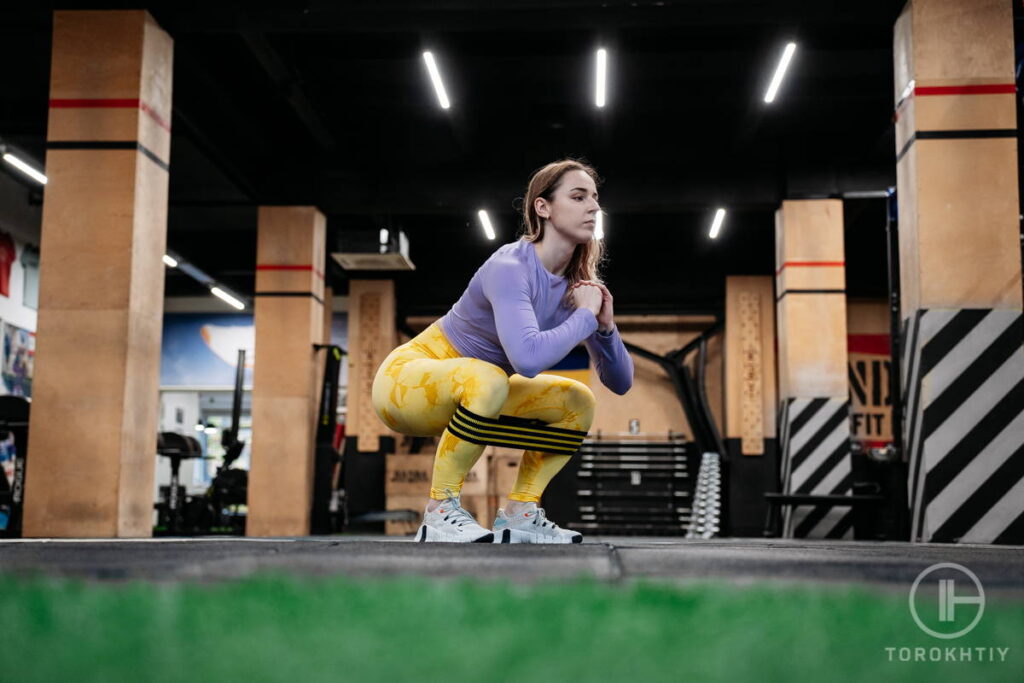
Who should avoid squatting every day?
Doing squats every day is a great way of gathering strength, muscle growth, and overall fitness. However, you should consider individual factors such as an individual current fitness level, recovery capacity, and existing injuries. Certainly, some people can ask themselves, “Is it safe to squat every day?” – “Yes, for sure, for the majority of people, such a sentence is true.
1. Beginners
Those who perform strength training for the first time or have experience of limited squatting shouldn’t squat every day. A strong base, correct technique, and muscular endurance are necessary before planning multiple workouts per week to avoid injury and facilitate continuous progress.
2. Those with existing injuries
People with previous musculoskeletal injuries in the knees, hips, or lower back should restrain from squatting every day or, consult with their healthcare provider. Meaning, performing squats incorrectly or keeping your knees in improper position puts the person at risk of further injury.
3. Advanced lifters with high-volume training
Advanced lifters who incorporate high-volume training or often lift heavy weights cannot benefit from daily squats. There is a risk of overtraining or burnout. This is why it is important to recover and allow muscles and joints to rest and repair well in between hard training sessions.
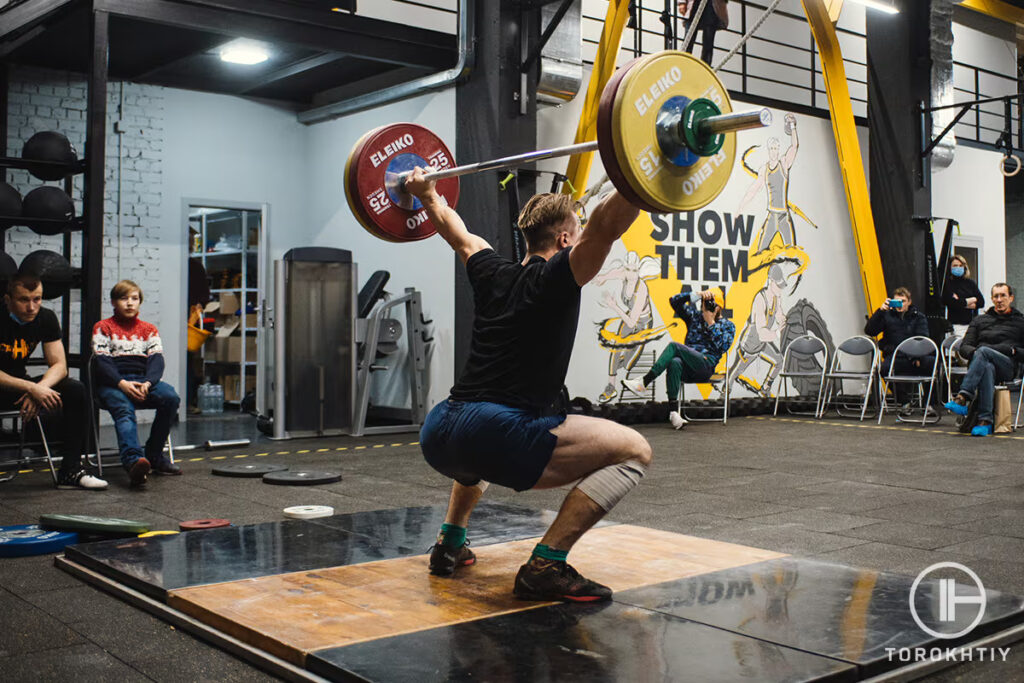
4. Individuals with joint issues
Individuals who have long-term joint diseases like osteoarthritis and rheumatoid arthritis face difficulty when they are doing squats every day since these activities aggravate their symptoms and cause them to be uncomfortable or feelin pain. Listen to your body while exercising and choose the exercises to mitigate joint pain. This helps prevent further damage and promotes joint health.
5. Pregnant women
Women should practice squats, especially during pregnancy. Squats are effective to maintain the levels of strength and mobility during the pregnancy period, and they are especially necessary to prevent the overload of abdominal muscles and the pelvic floor.
You may consult your healthcare provider or get advice from prenatal exercise experts to ensure exercise safety and its suitability during pregnancy.
6. Individuals with Accute cardiovascular conditions
Individuals with cardiovascular conditions like high blood pressure or heart disease should exercise caution while engaging in squats daily, especially if they wish to perform high-intensity or heavy-weight squats. Heart rate and blood pressure should be monitored to ensure the intensity is not exceeded for the heart’s health.
Know your body, prioritize perfect technique and form, and consult a fitness professional or your health care provider. If you have any concerns about your health and are unsure, you mustn’t start a squat everyday program. Properly customizing your workout to meet your needs and requirements is vital for ensuring safe and efficient exercise results.
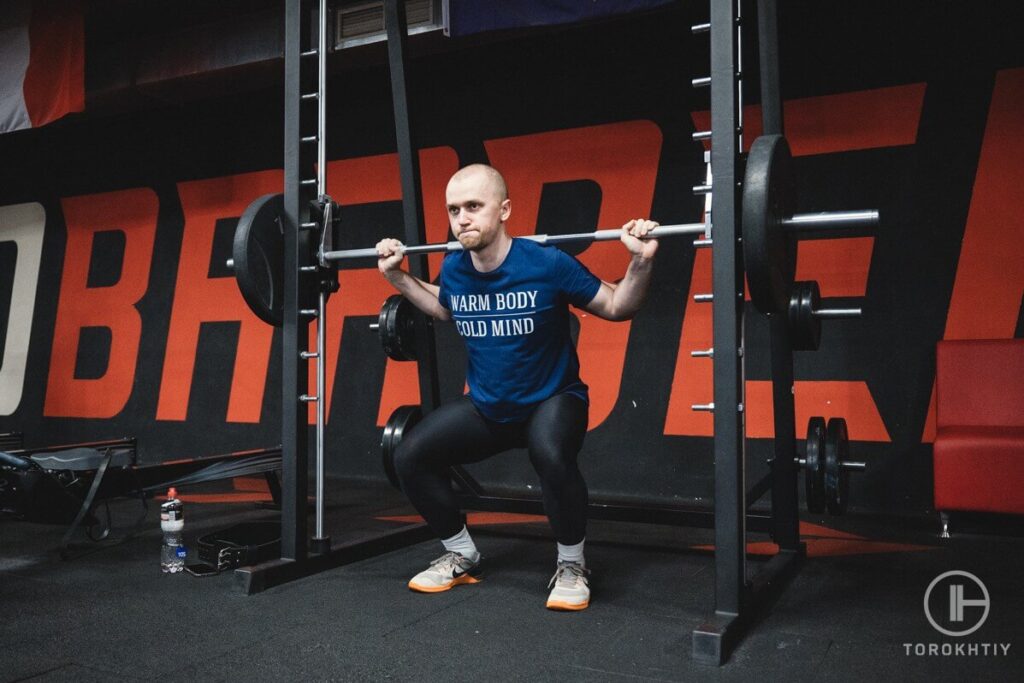
How do you recover from everyday squats?
Recovery is a crucial aspect of squatting every day so that one can prevent overuse injuries, promote muscle repair, and maximize stability gains. Here are some effective strategies to aid recovery and optimize your recovery process after daily squatting sessions:
1. Nutrition
Energy bars, fruits and legumes (protein, carbohydrate, healthy fat) can be useful. The meal or snack you should take after your training should be a healthy balance containing protein and carbohydrates for recovery. It should be taken within 30 minutes – 1 hour.
2. Hydration
Keep your hydration levels up by including a proper amount of water in your routine to replenish the lost body fluids and help in the metabolic process through cell repair. Perhaps you will find water and electrolyte solution mixture or electrolyte-rich fruits and vegetables helpful as they aid in maintaining an electrolyte balance and hydration.
3. Rest and sleep
Make a point to get proper sleep and rest that will give a chance for the tissue and nervous system to handle the damage of the daily squat as well as the healing of the tissue. Keep in mind that sleep shouldn’t be less than 7-9 hours a night, so you should try to implement relaxation techniques like meditation and deep breathing into your daily routine, and the stress level will reduce.
4. Active recovery
Move gently at a mild pace or perform low intensity exercises between hard workouts to clear waste products, alleviate muscle pain and accelerate recovery. Cardio activities do not impose any additional burden on the body.
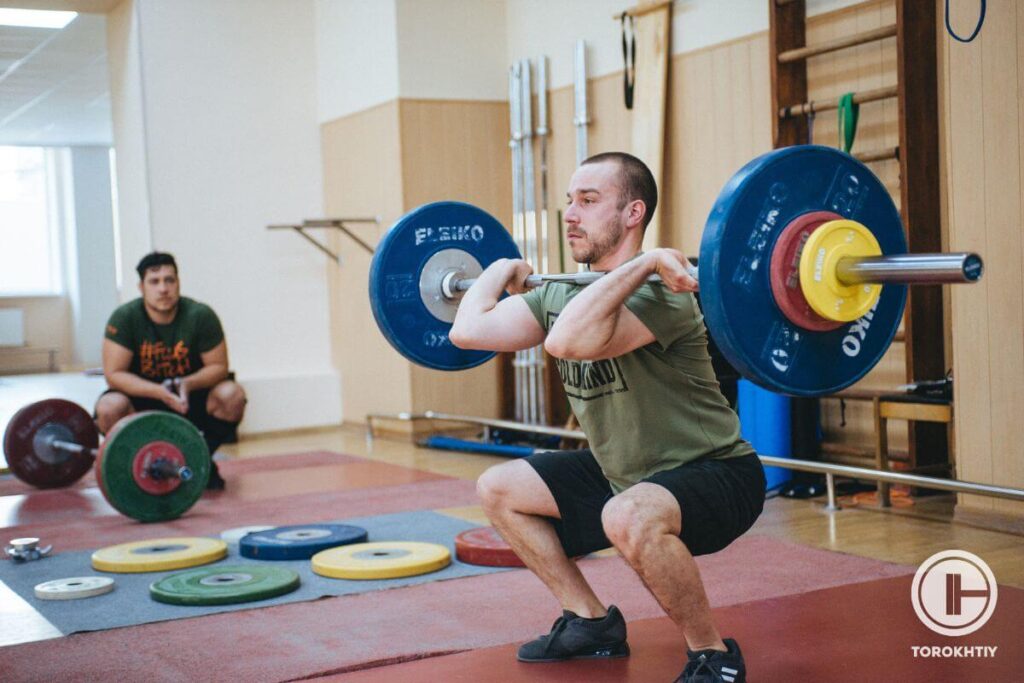
5. Foam rolling and stretching
Choose a daily routine to involve foam rolling and dynamic stretching to decrease muscle tension, improve flexibility as well as mobility. Direct attention to the tight or unpleasant areas, including quadriceps, hamstrings, and glutes, to fight muscle stiffness and promote recovery.
6. Massage and bodywork
Massage therapy or bodywork sessions as part of the regimen may be helpful in the process of recovery as it eases muscle tension, decreases inflammation as well as promotes relaxation. Having a professional massage therapist offers you the benefits of working on specific muscle groups as well as ample deep tissue massage or myofascial release techniques to speed up recovery and enhance general muscle function.
7. Cold therapy
Apply ice baths, cold packs, or contrast showers which will minimize inflammation, numb the pain and speed up the recovery rate after squatting sessions. Make use of cold therapy to relieve sore muscles for 10-15 minutes long, applying it also after or in between active pauses to increase its effectiveness.
To recover properly from your squats, make these restorative strategies a part of your daily practice. This will minimize the chance of injuries and improve your functional level and future development.
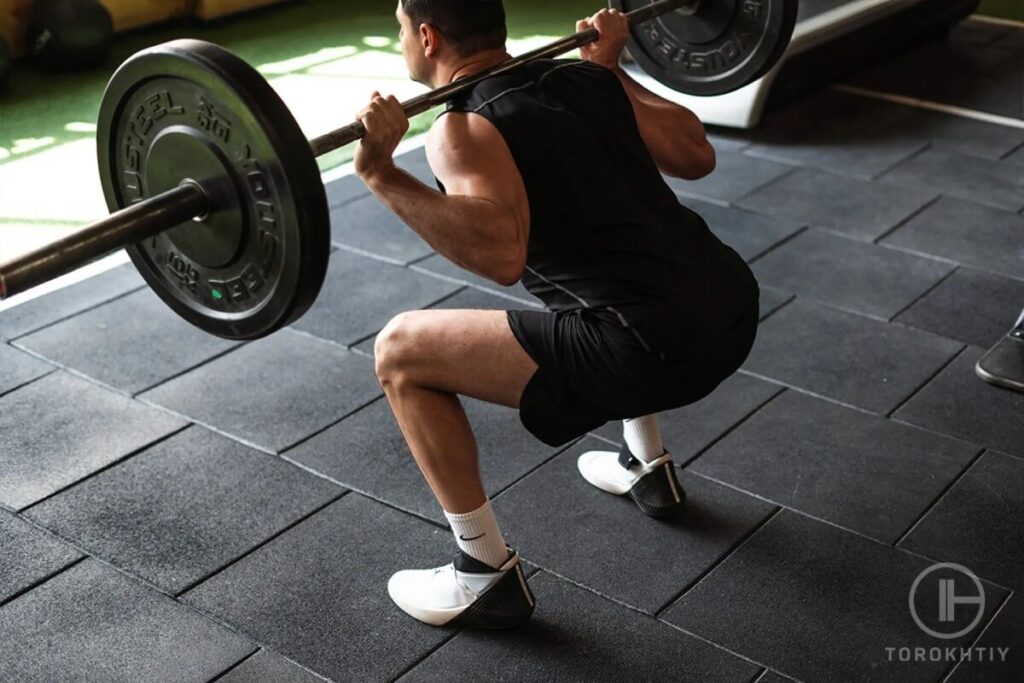
FAQ
Is it okay to squat with weights every day?
Squats may not be for everyone. You need to be physically fit at a level and you should try it and see whether you can make it, it is also vital for you to recover and have a good training program. Likewise, the starters or those who have pre-injuries can manipulate rest or reserve days to avoid overuse injuries. Changing the heavy and light squats is also a useful way for injury avoidance.
How many days a week should I squat?
The number of squats that is optimal is defined individually depending on one’s training purposes, physical fitness and regeneration capability. The efficiency of different bicycle transportation may depend on the season. For my part, I would suggest listen to your body, recover well and adjust your re-loading while considering how your body feels.
Is it bad to squat too much?
Overtraining may give you muscular overuse, muscle fatigue and eventually burnout, unlike when you do not have an appropriate sleeping and resting schedule.
It is very critical to monitor the training regiment of the athlete for the correct ratio of volume, intensity and frequency because both of them (i.e. under training and overtraining) should be prevented. Integration of rest days, adjusting squat intensities, and inducing muscle responses work can reduce the negative effects of overexerting the same muscles.
Conclusion
In general, daily squats can give a lot of strength, muscle growth, and improve general fitness, but it needs to be carefully planned and individual needs should be considered as well. Recall to focus on the recovery, and follow your body cues as well as the changes of your routine. Have questions or thoughts? Please share them in the comments below!
Referenses:
- Ashwin Wayne Isaacs, Kathryn Helen Myburgh, Filippo Macaluso, “Low-Volume Squat Jump Training Improves Functional Performance Independent of Myofiber Changes in Inactive Young Male Individuals,” PubMed Central (Year of Publication), URL: https://www.ncbi.nlm.nih.gov/ pmc/articles/PMC9321048/ (accessed Feb 19 2024).
- Silvio Lorenzetti, Mira Ostermann, Fabian Zeidler. “How to squat? Effects of various stance widths, foot placement angles and level of experience on knee, hip and trunk motion and loading”, BMC Sports Science, Medicine and Rehabilitation. (2018), no. 10: 14.
- Giuseppe Coratella, Gianpaolo Tornatore, Francesca Caccavale. “The Activation of Gluteal, Thigh, and Lower Back Muscles in Different Squat Variations Performed by Competitive Bodybuilders: Implications for Resistance Training”, International Journal of Environmental Research and Public Health, no. 18(2), (2021): 772.
- Slater, Lindsay V.; Hart, Joseph M. “Muscle Activation Patterns During Different Squat Techniques”, Journal of Strength and Conditioning Research, no. 31(3), (2017): 667-676.
- Hansen Keir, Cronin John. “Training Loads for the Development of Lower Body Muscular Power During Squatting Movements”, Strength and Conditioning Journal, no. 31(3), (2009): 17-33.
Why Trust Us?
With over 20 years in Olympic Weightlifting, our team does its best to provide the audience with ultimate support and meet the needs and requirements of advanced athletes and professional lifters, as well as people who strive to open new opportunities and develop their physical capabilities with us.
By trusting the recommendations of our certified experts in coaching, nutrition, dietology, and sports training programming, as well as scientific consultants, and physiotherapists, we provide you with thorough, well-considered, and scientifically proven content. All the information given in the articles concerning workout programming, separate exercises, and athletic performance, in general, is based on verified data. We ensure that you can rely on our professionals’ pieces of advice and recommendations that can be treated as personalized ones which will benefit you and fully meet your needs.
The product testing process is described in more detail here
Author: Jason Li
Personal Coach, Functional Range Conditioning Mobility Specialist
Jason is an NYC personal training expert and National level Olympic Weightlifting Coach with over 10 years of experience training everyday clients to high levels of performance. He has trained everyone from youth (13 years old and under) to masters (60+ years old) to regional and national rankings for powerlifting, Olympic Weightlifting, Short distance (up to 200m) sprinting, discus & hammer throwing.

